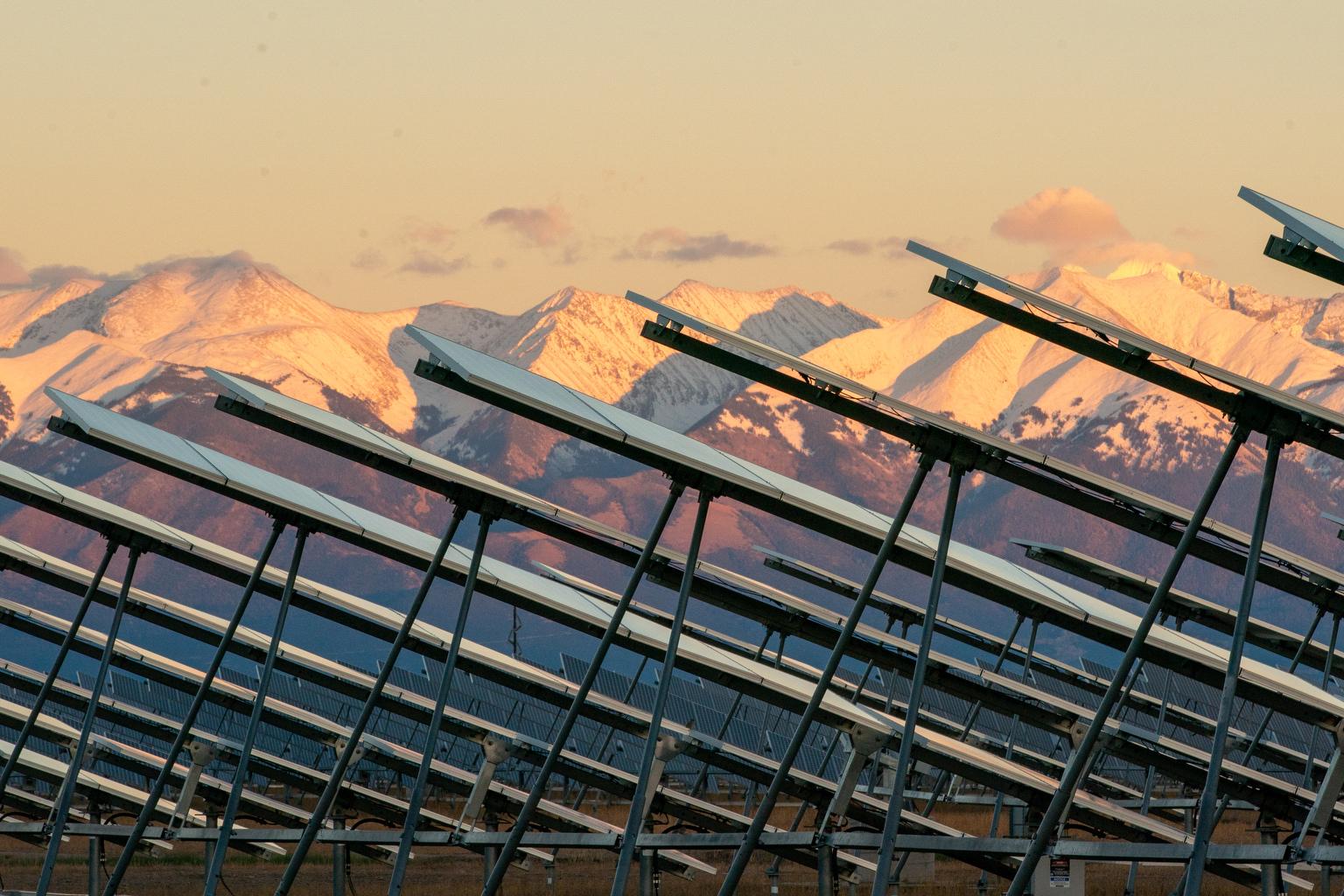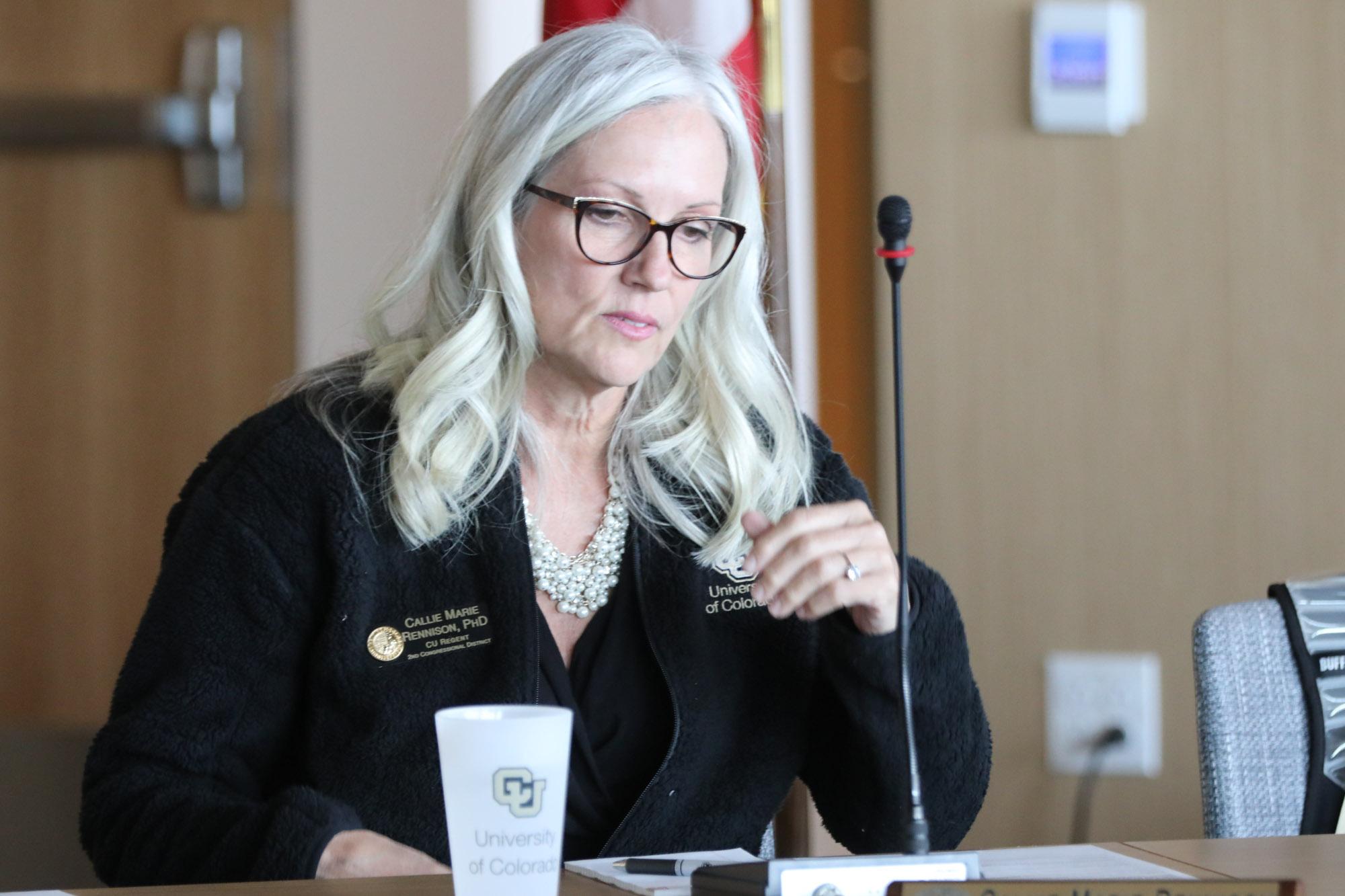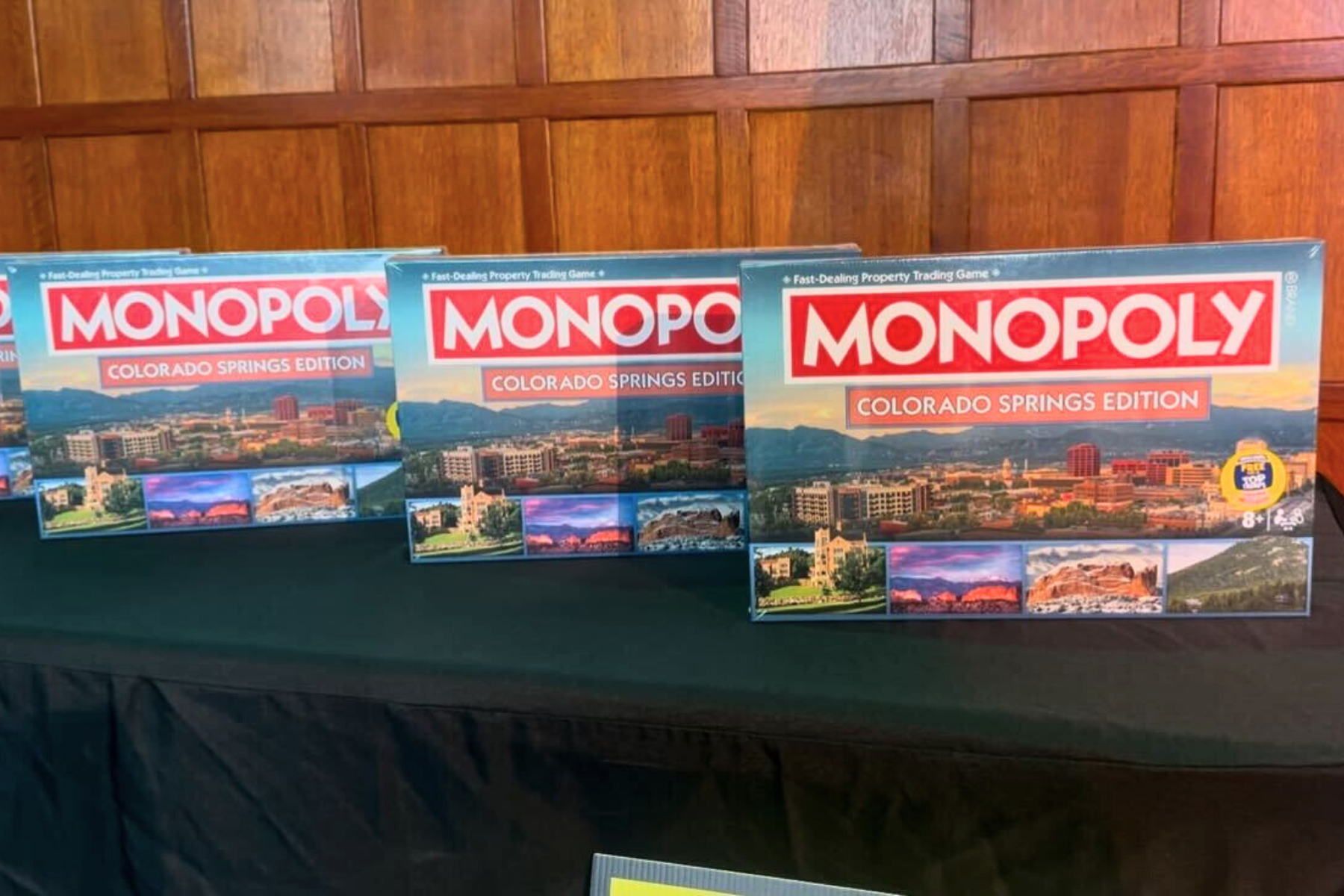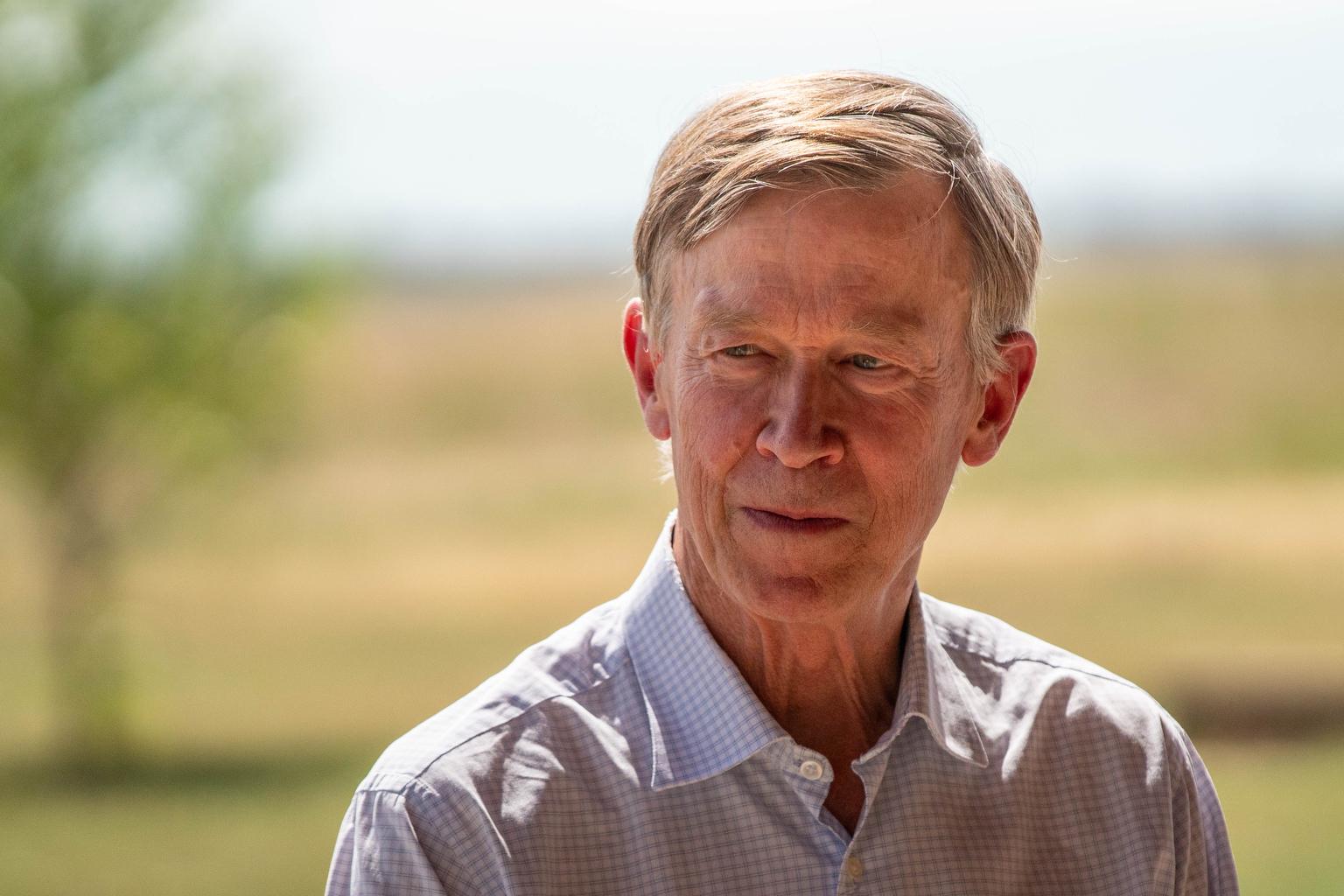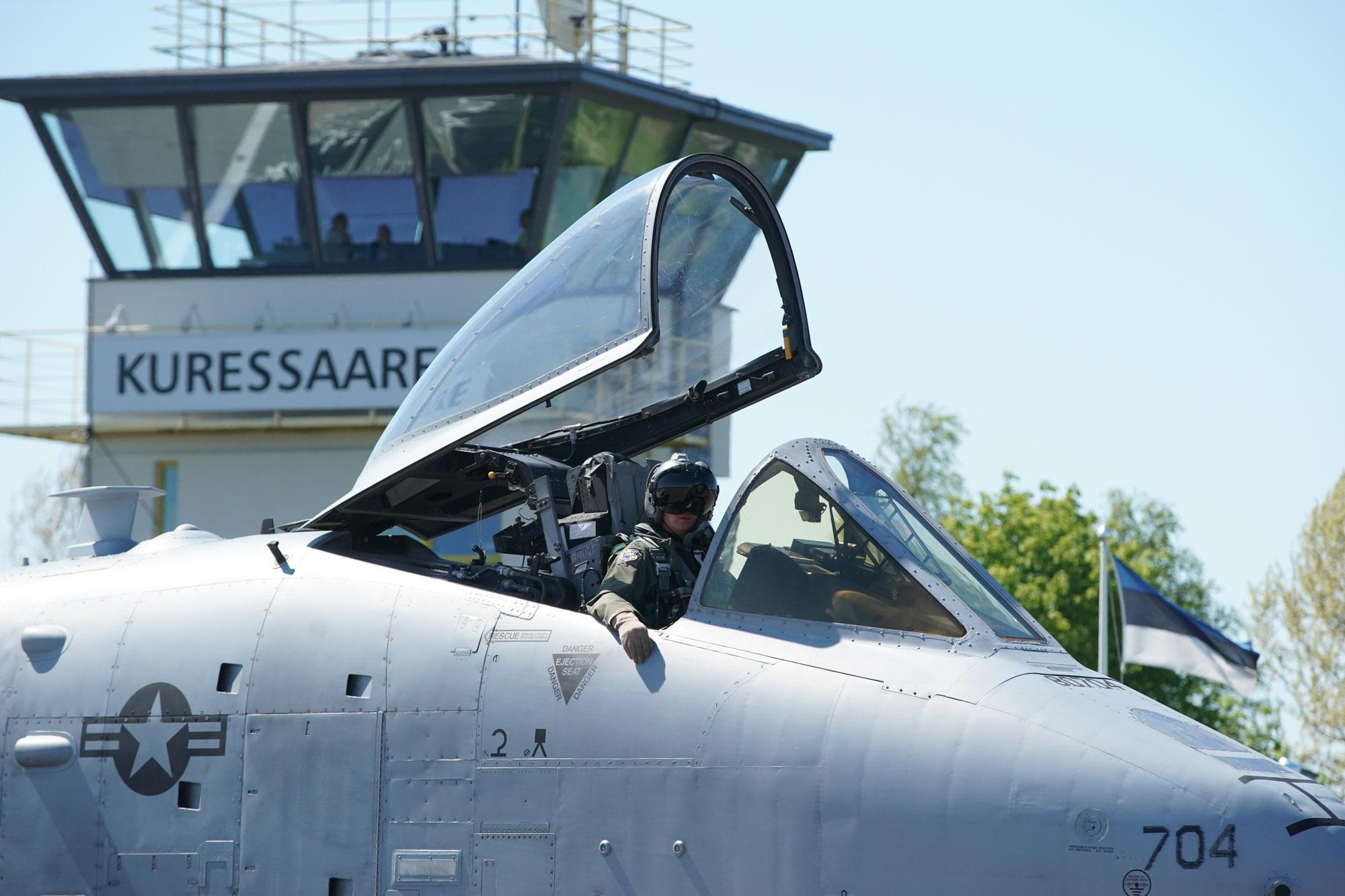
In a corner of the Museum of Occupations and Freedom in Tallinn, Estonia, four women are hard at work.
One, sitting, cuts large pieces of green, black and brown cloth into narrow strips. Nearby, an older woman with short gray hair and black shawl wrapped around her neck takes each piece and makes little cuts up the sides. And lastly, two other women, each on opposite sides of an old fishing net, tie these scraps of cloth onto its strands to give it a leafy, forest look.
They’re making a DIY camouflage net that will be sent to the Ukrainian military.
“Straight lines are easier to detect from the air. So it has to look as natural as possible,” Anare Koppel explained. That means creating different zigzags when they’re weaving and knotting in the strips — Don’t have too many colors in one place and make sure there are some gaps. This is her fifth time volunteering to make these nets.
It’s personal for her. Russia is just a three-and-a-half-hour drive from Tallinn. And when that much larger neighbor invaded Ukraine, it had a chilling effect on this Baltic nation.
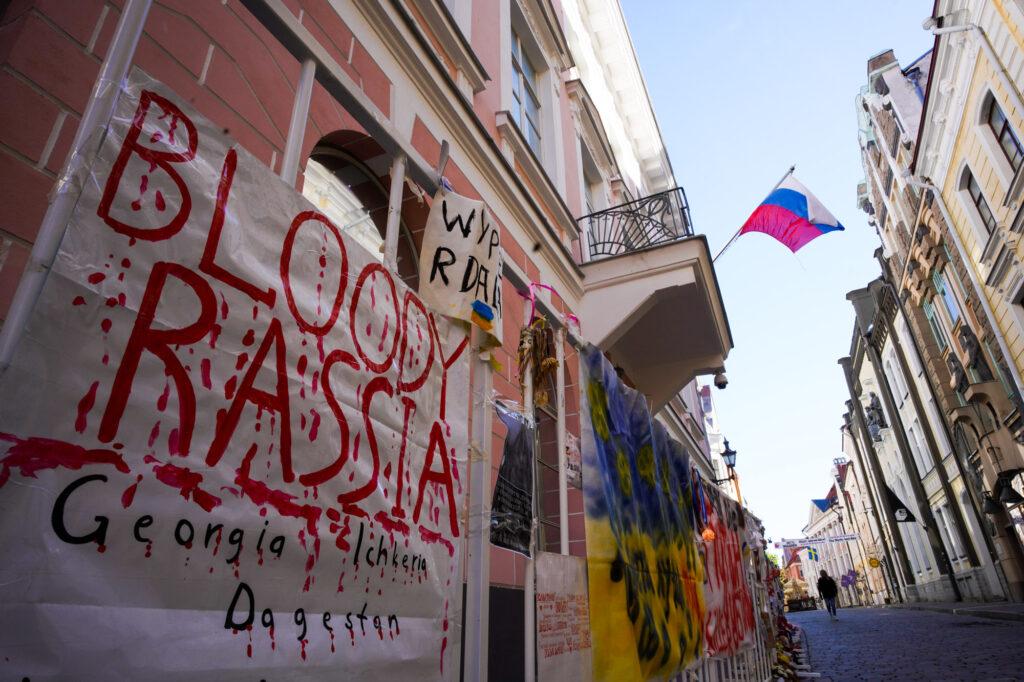
“This is not only about Estonia and it's not only about Ukraine. It's about the security of (the) whole Europe. It's the security. It's about the security of the world,” she said.
The Colorado National Guard and other military units have been participating in a large-scale military exercise across Eastern and Northern Europe this past month. While these kinds of exercises are nothing new, with the war in Ukraine, this year’s have taken on added significance, especially for the countries, like Estonia, that border Russia.
When the group asked to make the nets in the museum, Director Karen Jagodin said of course.
She sees reminders of the Soviet occupation of Estonia every day at work, and just steps outside her office are signs of the country’s freedom.
“You can't talk about occupations without freedom because occupation is the lack of freedom. And you can't talk about freedom if you don't talk about what it means to not have freedom,” Jagodin said.
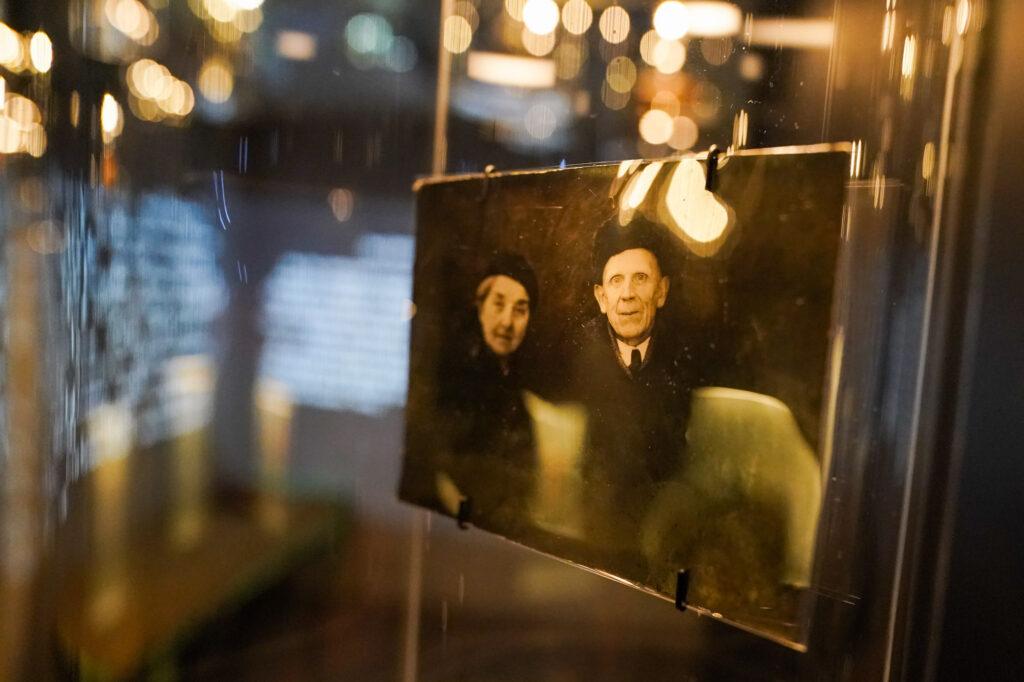
Estonia knows both. The country was occupied twice in the 20th century – first by Nazi Germany and then for over 50 years by the Soviet Union – a sovereignty the United States never recognized.
Jagodin points out the Russian invasion of Ukraine occurred on the same day of Estonia’s annual independence day. It was hard to celebrate knowing Ukrainians were fighting for their independence 800 miles south.
Jagodin said the West might have been shocked by Russia’s action, “but here in Estonia or in other Baltic countries, we weren't really surprised or shocked because we knew it. In a very fundamental way, we know that this is something that might happen.”
Estonia actually celebrates two independence days each year — August 20 is the country’s Restoration of Independence Day. It marks the day in 1991 that the country declared its independence from the Soviet Union.
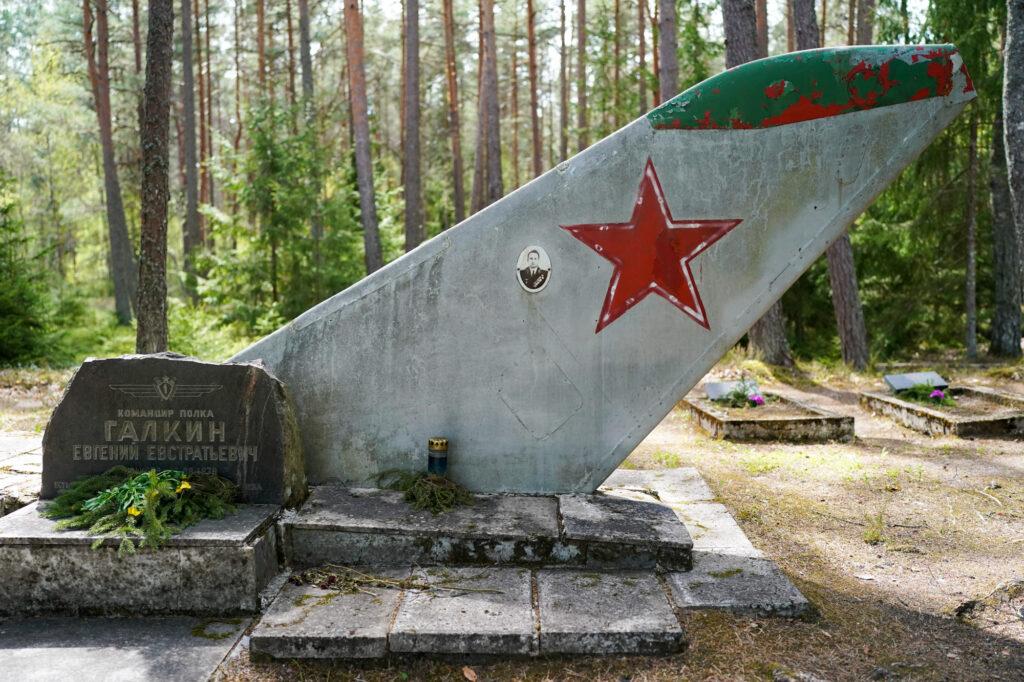
The three Baltic nations are low lying, relatively flat and small. From a military point of view, this region could be hard to defend. (A RAND Study in 2016 surmised if Russia attacked the Baltics, their troops could reach each capital in a matter of days.)
But strategically, they are part of the European Union and are NATO members. In keeping with member states’ commitments, Estonia has been putting 2 percent of its GDP towards defense for several years.
Riho Ütegi is commander of the Estonian Defense League, their version of the National Guard. He was also commander of the Estonian Special Forces until 2019. Looking at the situation in Ukraine, he says that country has done a good job at defending itself, but lacks the resources to launch a counter offensive. And he believes the situation would be similar, should Estonia ever face an invasion.
“We can protect our country — but we have to release (any occupied areas) after that. And it’s a situation where we need help,” he said. NATO allies, he believes, would offer that help.
Estonia’s military is primarily land-based. It has a small navy and limited air force. For help above, it relies on allied planes which cycle through as part of the Baltic Air Policing, a NATO mission which guards Baltic airspace.
The skies here lately have also hosted A-10s flown by Maryland’s Air National Guard as they participate in two exercises – Defender Europe and Swift Response.
Lieutenant Colonel Paul Kanning, a pilot with the 175th operations group from Maryland, said the goal is to work on their coordination with NATO air controllers, or JTACs, “who do the air to ground munition control.”
On Saaremaa Island, where these flights are taking place, it’s been fun for the locals to watch the A-10 "Warthogs" fly overhead; crowds regularly line up at the fence around at the airport to watch them take off and land. But it’s what’s happening on the ground that is the real point of the exercise: teams practice refueling from another plane without turning off the engine.
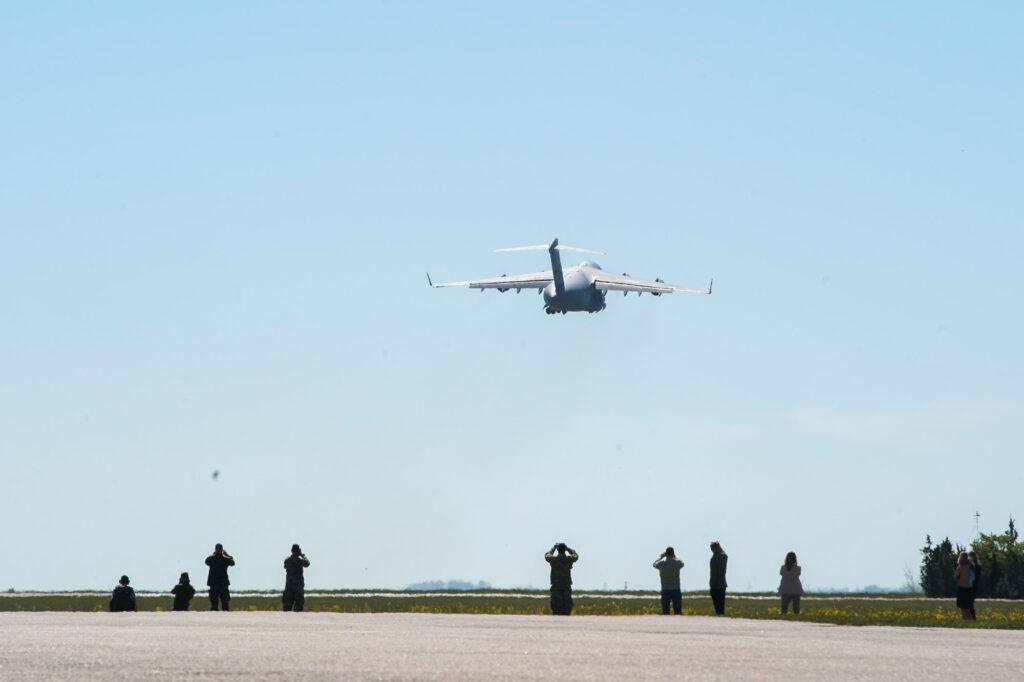
“We also have been doing a lot of what we call… agile combat employment — or ACE — operations, where we take a group of airplanes and some personnel, and we pick them up and we move them to a spot and we operate for a duration. And then we close it up, pick it up, move it again,” Kanning said.
They do this game of logistical hopscotch again and again and again.
That too is reassuring to NATO allies in this part of the world. Because in the case of an invasion, being able to respond quickly — say in three weeks versus say three months — could make a big difference.
“The fact that we show whomever may be watching that we can do this, probably better than anybody else, I think acts as a natural deterrent for whoever might be interested,” he stressed.
No one involved wants to say exactly which country that “whomever” might refer to. But the U.S. started the European Reassurance Initiative in 2014, after Russia’s annexation of Crimea. It morphed a couple of years later into the European Deterrence Initiative, which helps pay for exercises like Defender.
And the Russia threat hangs over like a menacing cloud on the horizon.
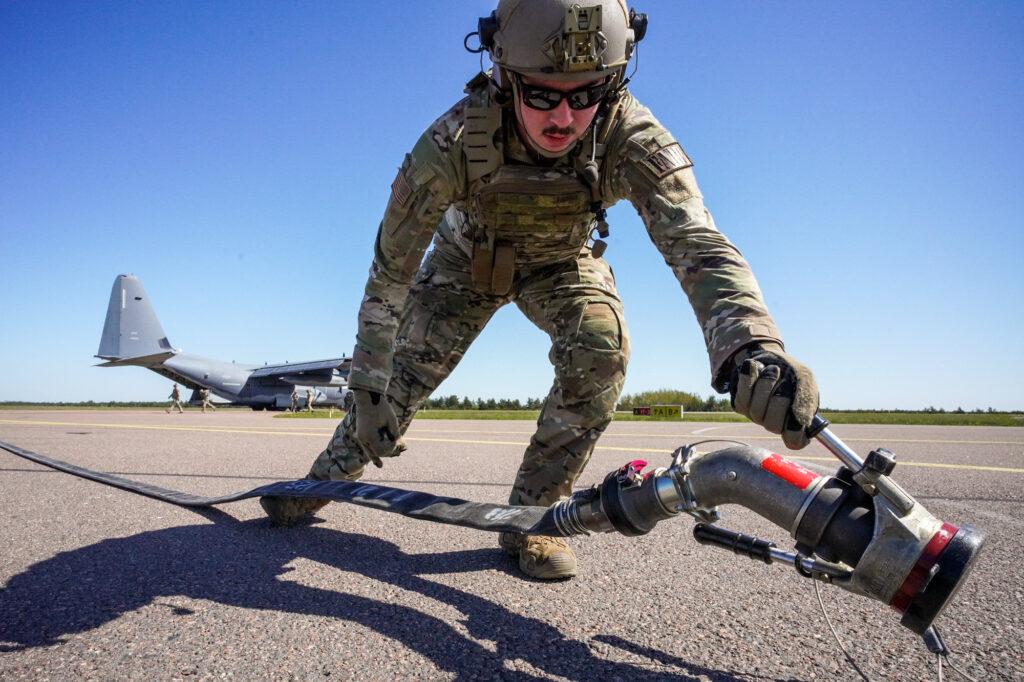
Kanning has exercised and trained in Estonia before. He also has nine combat deployments under his belt
“And never once has my wife been concerned,” he said. “Literally she's like, ‘I’m more nervous for you going (on temporary deployment) to the Baltics on this trip than I was any of times in the Middle East in Asia or wherever.’”
Members of the Colorado National Guard have been dealing with that unease too. Col. Chris McKee deployed to Afghanistan and spent a decade working with countries in the Balkans. When some of his soldiers first saw the news of Russia’s invasion of Ukraine as they were preparing for Defender and expressed concerns about coming exercises, McKee held a town hall.
He recalled saying, “You think you’re worried, what if you were Estonia? What message would it send to our partners if we said, ‘oh you know things in the world are tough right now. We’re not coming.’“
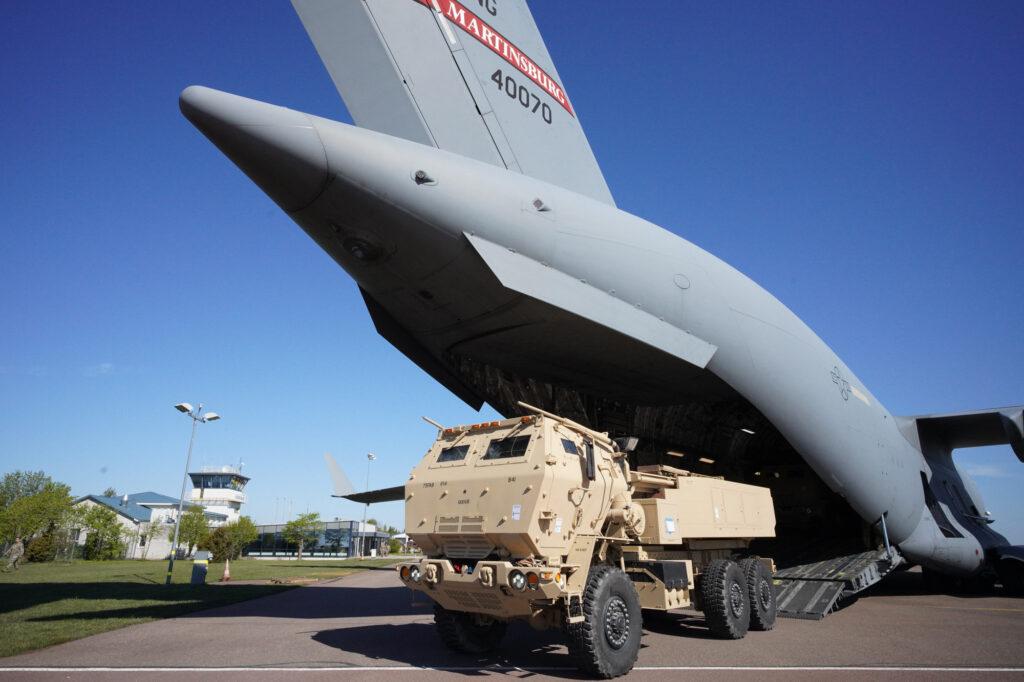
McKee said he went over NATO’s mission and the importance of Article 5, which states an attack on one member is an attack on all. His soldiers took it well and he said in the end, they all embraced coming here. Many of the soldiers and airmen CPR spoke with stressed the importance of reassuring allies and the partnership and friendships that develop on longer exercises like this, as well.
These exercises reaffirm the ties that make NATO what it is.
McKee also stressed that the situation in the Baltics is fundamentally different from Ukraine, which is not an EU member or a NATO member.
It’s this knowledge that helps Koppel, the volunteer camouflage maker in Tallinn, rest a little easier during this time of Russian aggression against its neighbors.
“If NATO doesn't defend an ally, then that means NATO is not existing anymore. And I think as the strongest defense Alliance in the world, I think NATO will do everything to win,” she said.

